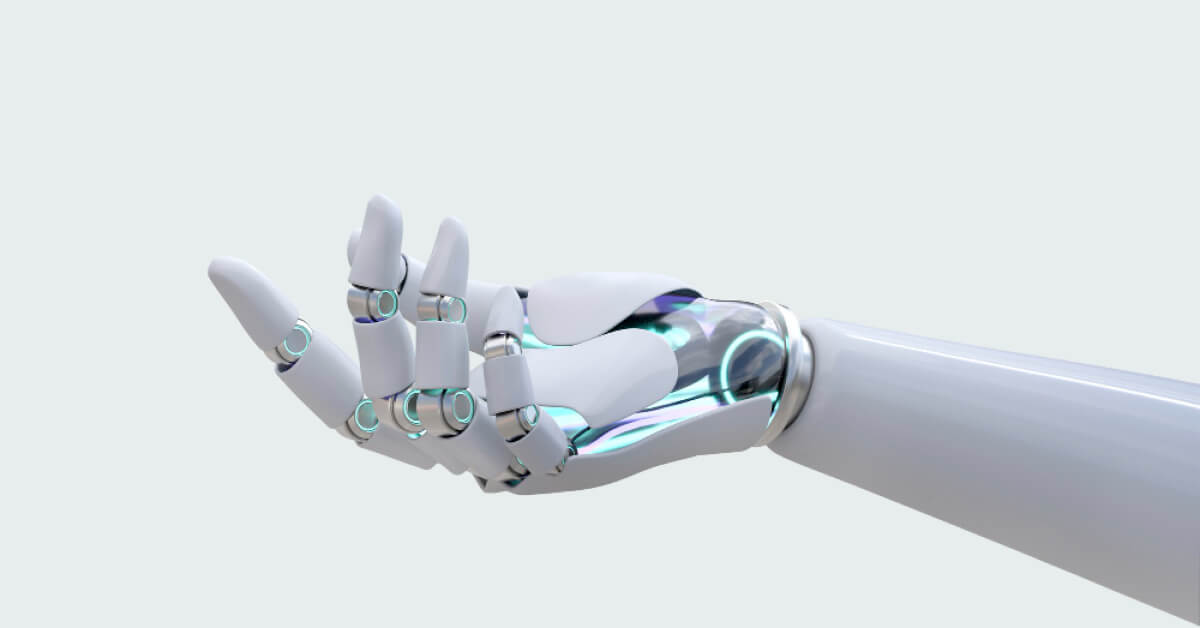How automation in HR is driving efficiency and innovation in the workplace

Imagine running a relay race where each runner must pass the baton smoothly for the team to succeed. Now, picture one runner fumbling the baton at every handoff—causing delays, confusion, and even chaos.
That’s often what HR processes feel like without automation.
From onboarding to employee surveys, performance reviews, and leave management, manual processes can slow things down, frustrate employees, and drain valuable time.
But what if the baton was passed seamlessly every time, with precision and speed? That’s what automation in HR is bringing to the workplace—a smooth, efficient flow of processes that not only saves time but also fosters innovation.
It’s no longer about endless paperwork or juggling spreadsheets; it’s about letting technology handle the repetitive tasks so HR teams can focus on what truly matters—people.
This blog dives into how HR and automation are revolutionizing workforce management, driving efficiency, and setting the stage for a future of smarter human resources.
What is automation in HR?

Automation in HR refers to the use of technology to streamline and simplify human resource processes. It replaces repetitive manual tasks, such as payroll processing, leave management, and employee data tracking, with digital systems and tools. This not only speeds up operations but also reduces errors, allowing HR professionals to focus on strategic initiatives like talent development and employee engagement.
At its core, automation in human resources is about creating efficiency and consistency. Tasks that once required hours of manual effort can now be completed in minutes. Various types of AI agents can be employed to handle different aspects of HR processes.
For instance, onboarding new hires can be transformed from a cumbersome process involving endless paperwork to a seamless experience through automated workflows and digital signatures. It’s like upgrading from a slow manual typewriter to a modern laptop—faster, smarter, and more effective.
Beyond efficiency, HR workflow automation offers insights through data analytics, helping organizations make informed decisions. It also enhances employee satisfaction by ensuring smoother processes, from quicker approvals to instant updates on HR policies.
Can HR be automated?

Yes, HR can absolutely be automated—though not entirely. Many administrative and repetitive tasks in human resources are perfectly suited for automation. Processes like payroll, attendance tracking, benefits administration, and resume screening can be efficiently managed using HR automation software. However, functions requiring a human touch, such as handling employee conflicts, providing mentorship, or fostering workplace culture, remain better suited for HR professionals.
The key is striking the right balance between automation in HR and human involvement. Automation thrives in areas where tasks are rule-based, repetitive, and data-driven.
For example, automation for the HR process can ensure faster and more accurate employee onboarding or generate real-time reports for decision-making. These capabilities free HR teams to focus on strategic and creative initiatives that demand empathy and innovation.
That said, automation cannot replace the nuanced skills of HR professionals. Addressing employee concerns, managing team dynamics, and fostering inclusion require interpersonal skills that technology can’t replicate. What it does, however, is augment the capacity of HR teams, allowing them to handle larger workloads with ease and precision.
Why HR automation is the future of workforce management?

As businesses evolve, managing a workforce requires more than traditional methods. Automation in HR provides innovative solutions, making processes efficient and scalable while fostering a competitive edge.
Here’s why HR automation is shaping the future of workforce management:
Streamlines repetitive tasks
HR automation eliminates repetitive tasks like payroll, attendance tracking, and data entry with precision. This saves countless hours and reduces errors, improving operational efficiency. Automating these processes allows HR teams to focus on strategic goals. The result is faster, smoother workflows that boost productivity.
Enhances decision-making
Automation provides real-time analytics and insights into workforce trends and performance metrics. HR teams can use this data to identify hiring needs, retention challenges, and productivity gaps. Data-driven decisions lead to effective strategies and improved workforce outcomes. This precision ensures HR aligns with organizational goals.
Improves employee experience
Automated systems empower employees through self-service tools for leave requests, policy access, and updating records. These tools reduce delays and foster a sense of autonomy and transparency. A streamlined process enhances employee satisfaction and trust. Better experiences lead to higher engagement and retention rates.
Boosts scalability
Manual HR processes can struggle as businesses expand and needs grow. Automation effortlessly scales to handle increased demands without additional overhead. This flexibility ensures consistent service delivery, regardless of workforce size. Businesses can grow confidently, knowing HR systems will keep up.
Ensures compliance and reduces risks
HR automation standardizes processes, ensuring compliance with labor laws and organizational policies. Automated record-keeping and alerts reduce the chances of missed deadlines or violations. Companies remain audit-ready and avoid penalties with reliable systems. This builds trust and legal security for long-term success.
Increases productivity
By automating routine tasks, HR teams can dedicate their time to high-impact initiatives like leadership development and workforce planning. Employees benefit from faster responses and fewer bottlenecks in HR processes. This creates a ripple effect, improving productivity across teams. Freed resources fuel organizational growth.
Enables remote workforce management
Automation simplifies managing remote employees with tools for virtual onboarding, performance monitoring, and communication. HR teams can seamlessly integrate and support remote staff, ensuring their productivity. It helps bridge the gap between physical and virtual workplaces. This adaptability makes remote management efficient and inclusive.
Supports innovation and agility
Automation fosters innovation by freeing up resources for creative problem-solving and strategy. Agile HR workflows enable organizations to respond quickly to market changes and workforce needs. It encourages a forward-thinking mindset that embraces technology. Companies become more resilient and prepared for future challenges.
Benefits of HR automation

HR automation is transforming how organizations handle their human resource functions. By integrating technology into day-to-day processes, businesses are achieving greater efficiency and improving employee satisfaction. Here are the distinct advantages of adopting automation in HR systems:
Reduces administrative burden
HR teams often spend a significant portion of their time on administrative tasks. Automation takes over mundane processes like scheduling interviews or processing reimbursements. This allows HR professionals to focus on employee development and strategic initiatives. Reduced workload leads to better time management and job satisfaction.
Enhances data security
HR departments handle sensitive employee information, which requires robust protection. Automated HR systems include advanced encryption and access controls to safeguard data. These features minimize the risk of breaches and unauthorized access. A secure system fosters trust among employees and ensures compliance.
Improves time-to-hire
Recruitment can be a lengthy and resource-heavy process when done manually. Automation speeds up candidate screening, interview scheduling, and communication. This reduces the time taken to fill positions, ensuring business continuity. Faster hiring means less disruption and more productivity.
Simplifies employee onboarding
New employee onboarding becomes smoother with automated workflows, digital training modules, and e-signature tools. Employees can complete necessary documentation and training at their own pace. This ensures a consistent and engaging onboarding experience. Automation helps new hires feel welcome and prepared from day one.
Optimizes resource allocation
HR automation software provides insights into resource utilization and workforce planning. Organizations can allocate resources more effectively based on data-driven forecasts. This prevents overburdening teams while ensuring projects have adequate support. Optimized resource management contributes to a balanced and efficient work environment.
Reduces costs
Automating HR processes minimizes manual errors, reduces redundancies, and saves operational costs. For example, automated payroll systems eliminate costly mistakes in salary calculations. With fewer resources spent on rectifying errors, companies can allocate budgets to growth initiatives. Cost efficiency improves overall profitability.
Drives continuous improvement
HR automation systems enable continuous feedback loops by collecting real-time data on employee satisfaction and performance. These insights allow companies to identify gaps and improve processes proactively. Regular upgrades to automated systems keep them aligned with changing needs. Continuous refinement ensures the organization stays competitive and agile.
Top HR processes that can be automated

Automation in HR services can revolutionize how tasks are managed, reducing errors and freeing up time for strategic activities. Here are the top HR processes that are perfectly suited for automation:
- Recruitment and applicant tracking: From posting job openings to screening resumes, automation simplifies the hiring process. Applicant tracking systems (Ats) Help filter qualified candidates, schedule interviews, and streamline communication. This reduces hiring time and improves the candidate experience.
- Payroll management: Automated payroll systems ensure accurate and timely salary calculations, tax deductions, and benefits administration. They minimize human errors and simplify compliance with tax regulations. This keeps employees satisfied and reduces administrative strain.
- Employee onboarding: Onboarding tools automate tasks like document collection, training schedules, and orientation processes. New hires can complete forms, access training materials, and get familiarized with company policies online. It ensures a smooth start and saves HR valuable time.
- Attendance and leave management: Automated systems track employee attendance, manage leave requests, and calculate overtime seamlessly. They provide real-time insights into employee availability and streamline approvals. This ensures transparency and reduces paperwork for managers and HR teams.
- Performance management: HR automation software facilitates goal setting, performance reviews, and real-time feedback. Employees and managers can track progress against objectives using digital tools. This fosters continuous improvement and aligns individual goals with organizational objectives.
Examples of HR automation in action

Automation in HR isn’t just a trend; it’s a game-changer reshaping how organizations manage their workforce. By integrating technology into key processes, companies can streamline operations and improve employee experiences. Here are real-world examples showcasing the power of HR automation in action.
- Automated feedback: Performance management software like CultureMonkey automates feedback collection and eNPS. Leaders can set reminders for reviews and use data-driven insights to evaluate performance. This makes appraisals more consistent and data-backed.
- Chatbots for employee queries: AI-powered chatbots handle common HR queries like leave policies, payroll details, or benefits information. These bots are available 24/7, providing instant answers and reducing the load on HR teams. This improves employee satisfaction and operational efficiency.
- Automated recruitment platforms: Platforms like LinkedIn recruiter and greenhouse streamline the hiring process by automating job postings, candidate screening, and interview scheduling. These tools use AI to match candidates with job requirements, enhancing the quality of hires. Automation ensures faster and more accurate recruitment.
- Digital onboarding workflows: Some companies provide tools to automate onboarding, including document collection, training modules, and e-signatures. New hires can complete the necessary steps online before their first day. This creates a seamless and engaging onboarding experience for employees.
- Self-service portals for employees: Automated self-service portals allow employees to access payslips, request leaves, and update personal information without HR intervention. Automation tools enhance transparency and reduce response times. This empowers employees and lightens HR workloads.
10+ Best HR automation tools

As HR departments increasingly adopt automation, choosing the right tools can significantly enhance efficiency and employee satisfaction. Here are some of the best HR automation tools trusted by businesses worldwide:
- CultureMonkey: A powerful employee engagement and feedback management platform, CultureMonkey automates feedback collection, eNPS tracking, and sentiment analysis.
Leaders can set reminders for regular pulse surveys, use AI-powered analytics to process employee responses, and get real-time engagement insights.
Some of the key features include:
- 100+ research-backed survey templates to measure engagement, DEIB, work-life balance, and more.
- Multi-lingual and customizable surveys to improve participation from diverse workforces.
- Automated pulse surveys to collect ongoing, real-time employee feedback.
- AI-driven analytics powered by GPT to extract meaningful trends from large datasets.
- GDPR-compliant, anonymous feedback collection to ensure confidentiality and trust.
- Employee lifecycle tracking to predict attrition and improve retention strategies.
- Seamless HRMS integrations with platforms like Zoho People, Darwinbox, Keka HR, and Workday. - BambooHR: Ideal for small and medium-sized businesses, BambooHR offers features like employee data management, onboarding, and performance tracking. Its user-friendly interface makes automation accessible to HR teams of any size.
- Workday: Workday is a comprehensive solution for payroll, talent management, and workforce planning. It integrates AI to provide insights, making it a favorite for large enterprises.
- SAP SuccessFactors: This cloud-based platform streamlines recruitment, employee development, and goal alignment. It’s designed for businesses looking for robust HR workflow automation.
- Zoho People: A versatile tool, Zoho People manages employee data, attendance, and leave requests seamlessly. It’s perfect for companies seeking affordable yet effective HR automation software.
- ADP Workforce Now: ADP is renowned for payroll and HR solutions that simplify compliance, benefits administration, and performance management. Its scalability makes it ideal for growing organizations.
- Rippling: Rippling integrates payroll, IT, and HR processes into one platform, automating onboarding, offboarding, and compliance tasks. It’s a modern tool for tech-savvy businesses.
- UltiPro by UKG: This platform offers automated HR solutions for payroll, talent acquisition, and employee engagement. It’s tailored for mid-sized and large enterprises seeking end-to-end HR support.
- Gusto: Gusto automates payroll, benefits, and tax filings, making it a go-to tool for small businesses. Its intuitive design ensures smooth operations for busy HR teams.
- Keka: Keka specializes in payroll, attendance, and performance management automation. It’s particularly popular among businesses in India for its localized compliance features.
- 15Five: This tool focuses on performance management and employee feedback, automating goal setting and progress tracking. It’s ideal for organizations prioritizing team development.
- Greenhouse: Greenhouse automates recruitment workflows, from sourcing candidates to onboarding. Its advanced features enhance the efficiency and quality of the hiring process.
Important automation features in HR software

HR software is designed to simplify complex processes and improve efficiency through automation. The right features can transform how organizations manage their workforce and enhance employee experiences. Here are the key automation features every HR software should offer:
1. Employee data management
HR software should centralize employee information, including personal details, job history, and performance data. Automation ensures updates are seamless and accessible across departments. This feature improves accuracy and reduces manual effort.
2. Payroll processing
Automated payroll systems handle salary calculations, tax compliance, and benefits administration. Features like direct deposit and real-time error detection save time and prevent costly mistakes. This ensures timely and accurate payments for employees.
3. Recruitment and applicant tracking
A robust ATS (Applicant Tracking System) automates job postings, resume screening, and candidate communication. It uses AI to match applicants to roles effectively. This speeds up hiring and enhances the candidate experience.
4. Leave and attendance tracking
Automated leave management tracks employee attendance, manages time-off requests, and calculates overtime. It integrates with payroll for seamless operations. This feature promotes transparency and reduces administrative delays.
5. Performance management tools
HR software automates goal setting, feedback collection, and performance reviews. It provides real-time progress tracking and analytics to support data-driven decisions. This ensures consistent and effective appraisals.
6. Onboarding workflows
Automation in onboarding ensures that new hires complete paperwork, training, and introductions efficiently. Features like e-signatures and digital checklists provide a smooth and engaging onboarding experience. This fosters a strong first impression for new employees.
7. Compliance management
HR software automates compliance with labor laws, tax regulations, and industry standards. It sends reminders for policy updates and required documentation. This feature minimizes risks and ensures legal adherence across the organization.
When to implement HR automation?
Implementing HR automation can greatly improve efficiency and employee satisfaction, but the timing of adoption is key to ensuring success. Here are situations and signs indicating when it’s the right time to embrace HR automation:
- When manual processes are overwhelming: If your HR team spends excessive time on repetitive tasks like payroll, recruitment, or data entry, it’s time to automate. Automation streamlines these processes, allowing your team to focus on strategic initiatives.
- As your workforce expands: Growing organizations need scalable solutions to handle increased employee data and processes. HR automation provides the infrastructure to support this growth without overwhelming HR staff.
- When errors are becoming frequent: Errors in payroll, compliance, or record management can be costly and damage employee trust. Automation reduces the risk of human error by standardizing and streamlining workflows.
- To enhance employee experience: If employees frequently face delays or confusion with HR-related queries, automated self-service portals can provide quick solutions. This improves satisfaction and reduces HR workload.
- When data analysis becomes crucial: For organizations aiming to make data-driven decisions, automation provides tools to track and analyze HR metrics. This enables informed strategies to improve productivity and engagement.
- When compliance requirements are complex: Staying updated with changing regulations can be challenging. Automation helps manage compliance by sending alerts and automating adherence to laws, reducing legal risks.
- To stay competitive: In a competitive market, adopting automated HR solutions ensures efficiency and innovation. It positions your organization as a modern, forward-thinking workplace.
How to implement HR automation?

Integrating HR automation into your organization is a strategic move that can revolutionize workforce management. However, a thoughtful and systematic approach is essential to ensure seamless adoption and long-term success. Here’s a step-by-step guide to implementing HR automation effectively.
- Assess your current HR processes: Start by analyzing existing HR workflows and identifying pain points. Determine which processes are time-consuming, error-prone, or repetitive. This assessment helps prioritize tasks for automation and highlights areas needing improvement.
- Define clear goals: Set specific objectives for HR automation, such as reducing Manual errors, improving employee experiences, or enhancing data insights. Clear goals guide the selection of suitable tools and ensure measurable outcomes.
- Choose the right HR automation software: Evaluate various HR tools based on features like employee data management, payroll automation, and compliance support. Consider scalability, ease of integration, and user-friendliness to match your organization’s needs.
- Involve stakeholders and employees: Engage HR teams, managers, and employees in the decision-making process. Gather feedback to address concerns and ensure the chosen solution aligns with their expectations. Collaboration fosters smoother adoption.
- Plan a phased implementation: Introduce automation gradually by starting with high-priority processes. A phased rollout minimizes disruption and allows teams to adapt incrementally. Monitor progress and address challenges at each stage.
- Provide training and support: Equip employees with the knowledge to use the new system effectively. Offer hands-on training, user guides, and ongoing support to boost confidence and adoption rates.
- Monitor and optimize: Regularly review the performance of your automated HR solutions. Use analytics to identify gaps, track ROI, and refine processes for continuous improvement.
Common challenges in automating HR processes & how to tackle them

While HR automation promises efficiency and innovation, the journey to implementing it is not without hurdles. Organizations often encounter challenges ranging from resistance to change to technical difficulties. Understanding these obstacles and their solutions is key to a smooth automation transition.
- Resistance to change: Employees and HR teams may resist adopting new technologies due to fear of job displacement or unfamiliarity with tools. Overcome this by fostering a culture of openness and offering comprehensive training to demonstrate how automation supports rather than replaces their roles.
- High implementation costs: The upfront investment in HR automation software can be daunting, especially for small businesses. Start by automating high-priority processes and explore scalable tools that align with your budget to manage costs effectively.
- Data security concerns: HR systems handle sensitive employee information, making data breaches a significant risk. Mitigate this by choosing software with robust security features like encryption, role-based access, and regular compliance updates.
- Integration challenges: Integrating HR automation tools with existing systems can be complex and lead to inefficiencies. Opt for solutions that offer seamless integration and work closely with its teams to ensure compatibility.
- Limited customization options: Some HR tools may not fully meet your organization’s unique needs. Choose software with flexible customization options to tailor processes like onboarding, performance management, and payroll.
- Insufficient employee training: Without proper training, employees may struggle to use automated systems, leading to inefficiencies. Provide hands-on sessions, user-friendly guides, and ongoing support to ensure confident usage across the board.
- Delayed ROI realization: It may take time for the benefits of automation to outweigh the initial costs and efforts. Set realistic expectations and continuously monitor performance metrics to showcase incremental improvements.
- Inadequate vendor support: Unreliable vendor support can lead to downtime and unresolved technical issues. Partner with vendors known for robust customer support and ensure sla agreements cover critical needs.
- Complexity in change management: Transitioning to automation requires careful management of processes and people. Assign dedicated change managers to oversee the shift, address concerns, and ensure minimal disruption to workflows.
The ethical considerations of HR automation

As HR automation reshapes workforce management, it’s crucial to consider the ethical implications of these changes. Balancing efficiency with fairness and transparency is essential to ensure positive outcomes for both the organization and its employees. Here are the key ethical considerations to keep in mind:
Job displacement concerns
One of the biggest ethical concerns is the potential for job loss as tasks become automated. Organizations should be transparent about automation plans and focus on reskilling employees, ensuring they transition to new roles within the company rather than being left behind.
Bias in automated decision-making
Automated systems, especially those powered by AI, can inadvertently perpetuate biases in recruitment, promotions, or performance reviews. It’s essential to regularly audit algorithms for fairness, ensuring that automation doesn’t unintentionally discriminate based on gender, race, or other factors.
Privacy of employee data
HR automation often involves collecting and processing sensitive employee data, raising concerns about privacy. Companies must prioritize strong data protection measures, ensuring compliance with privacy regulations like GDPR and maintaining transparency about how data is used and stored.
Employee autonomy and control
As HR processes become more automated, employees may feel a loss of control over decisions affecting their careers. Organizations should strike a balance by ensuring that automated systems support, rather than replace, human judgment, particularly in areas like performance management and career development.
Transparency and accountability
Automated systems can make decision-making processes feel impersonal or opaque to employees. Ensuring transparency in how decisions are made, particularly when automation is involved, helps maintain trust. Clear accountability measures should be in place to address any issues arising from automated decisions.
Future trends in HR automation
The evolution of HR automation is poised to significantly reshape the way organizations manage their workforce. From AI-driven decision-making to predictive analytics, the future promises more intelligent, personalized, and efficient HR processes. Let’s explore the key trends shaping HR automation in the coming years:
- AI-powered recruitment and onboarding: AI-driven tools will continue to revolutionize recruitment by automating candidate screening and matching. These systems will use data from past hiring patterns to predict the best-fit candidates, reducing biases and enhancing hiring speed.
- Advanced predictive analytics for employee retention: Predictive analytics will play a significant role in improving employee retention by identifying early signs of disengagement or burnout. Automation can track key metrics, enabling HR to intervene proactively and improve employee satisfaction.
- Personalized learning and development: HR automation will enable personalized career development programs based on individual employee data. With AI, companies can offer tailored learning opportunities that match employees’ unique skills and growth ambitions, enhancing workforce productivity.
- Enhanced employee self-service platforms: Self-service HR platforms will become even more intuitive, allowing employees to access information, request time off, or manage benefits with minimal intervention from HR. These platforms will provide personalized recommendations and solutions.
- Robotic process automation (RPA) for administrative tasks: RPA will become more prevalent in automating routine administrative tasks, such as payroll processing, benefits administration, and compliance reporting. This will free up HR professionals to focus on more strategic initiatives.
- Integration of HR automation with employee experience platforms: HR automation will increasingly be integrated with employee experience platforms to provide seamless communication and engagement. These integrations will allow HR teams to track employee satisfaction and respond to concerns in real-time.
Role of employee pulse surveys in measuring the success rate of HR automation in the workplace

Employee pulse surveys have emerged as an essential tool for evaluating the effectiveness of HR automation in organizations. These short, frequent surveys provide real-time insights into employee experiences, helping HR teams assess how well automation is being received. Here’s how pulse surveys can play a pivotal role in measuring the success of HR automation:
- Assessing employee satisfaction with automated systems: Pulse surveys allow employees to share feedback on their experience with automated HR tools, such as performance management or payroll systems. This helps HR teams gauge satisfaction levels and pinpoint areas that need improvement.
- Identifying pain points in automation processes: These surveys can uncover specific challenges employees are facing with automated HR processes, whether it’s usability issues or integration difficulties. HR can use this data to make targeted improvements and ensure smoother implementation.
- Monitoring adoption and engagement rates: By measuring employee engagement with automated systems through pulse surveys, HR can track how well these tools are being adopted across different departments. Low engagement levels may indicate the need for additional training or communication.
- Understanding the impact on employee experience: Employee pulse surveys can reveal how HR automation is affecting overall employee experience, from onboarding to career development. The data helps HR understand whether automation is enhancing or hindering the employee journey.
- Measuring the perceived value of HR automation: These surveys help HR teams assess whether employees see value in automation. By gathering feedback on how automation has improved their work processes, HR can measure whether the investment in automation is yielding positive outcomes.
Conclusion
HR automation is transforming the workplace, driving efficiency, innovation, and improved employee experiences. As we move towards a more automated future, organizations need to navigate the challenges and ethical considerations while leveraging the benefits. By using tools like pulse surveys, HR teams can continuously evaluate the success of automation and make data-driven improvements.
Embracing automation in HR processes not only enhances productivity but also creates a more personalized and dynamic work environment. If you're ready to take your HR processes to the next level, CultureMonkey offers robust solutions that help you gather feedback, drive employee engagement, and improve your HR automation strategy. Empower your HR team and workforce with the right tools for success!
FAQs
1. What are the key differences between HR automation and HR software?
HR automation refers to using technology to streamline repetitive HR tasks, such as payroll and recruitment. HR software, on the other hand, encompasses a broader range of tools for managing HR functions, including performance tracking, benefits administration, and employee data management. Automation is a subset within the broader HR software ecosystem, focused on efficiency.
2. How does HR automation improve recruitment efficiency?
HR automation improves recruitment efficiency by automating time-consuming tasks like resume screening, candidate matching, and interview scheduling. By leveraging AI and machine learning, automated systems can quickly filter through large candidate pools, reducing manual effort and speeding up the hiring process. This allows HR teams to focus on high-priority tasks like candidate engagement and decision-making.
3. Can HR automation replace traditional HR roles?
HR automation cannot fully replace traditional HR roles but rather complements them. While it can handle routine, repetitive tasks like data entry, payroll processing, and scheduling, human expertise is still needed for complex functions like conflict resolution, strategic planning, and employee relations. Automation enhances HR’s efficiency, allowing professionals to focus on higher-value activities.
4. What is the cost of implementing HR automation tools for a mid-sized organization?
The cost of implementing HR automation tools for a mid-sized organization can vary widely depending on the complexity and scale of the solution. On average, small to mid-sized businesses might spend anywhere between $5,000 to $50,000 annually for HR automation tools, considering licensing fees, setup costs, and ongoing maintenance. Customization and employee training can add to the overall cost.
5. How can HR professionals prepare for the transition to automated systems?
HR professionals can prepare for the transition to automated systems by familiarizing themselves with the technology, learning new skills, and engaging in training programs. It’s essential to collaborate with IT teams for seamless integration and ensure clear communication with employees. Additionally, HR should gradually introduce automation, allowing time to adjust and address any concerns along the way.



